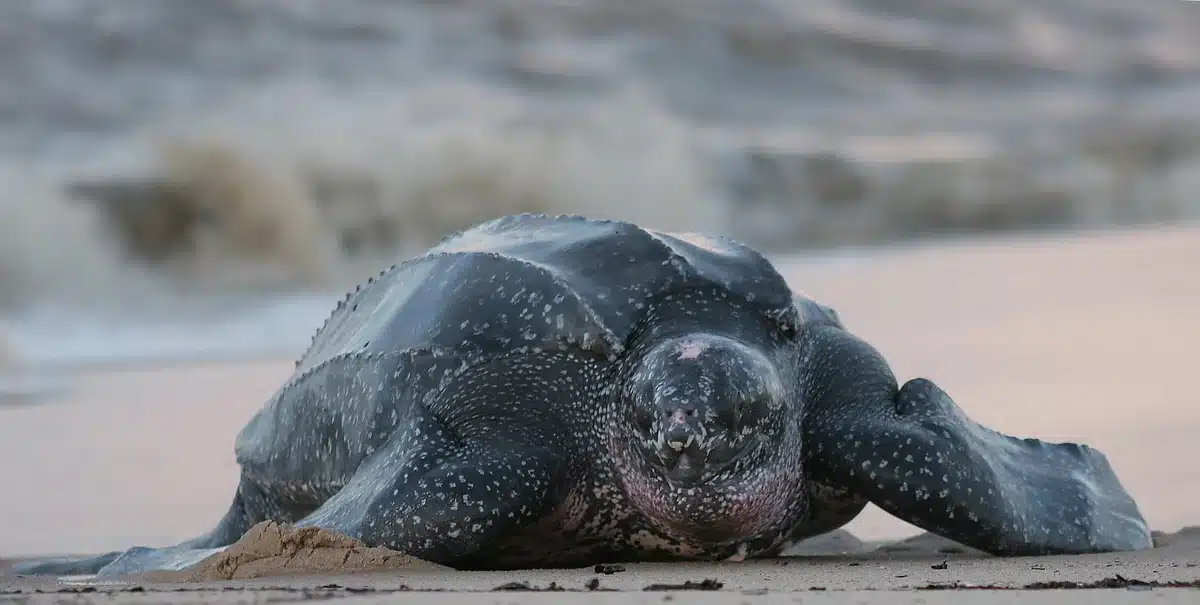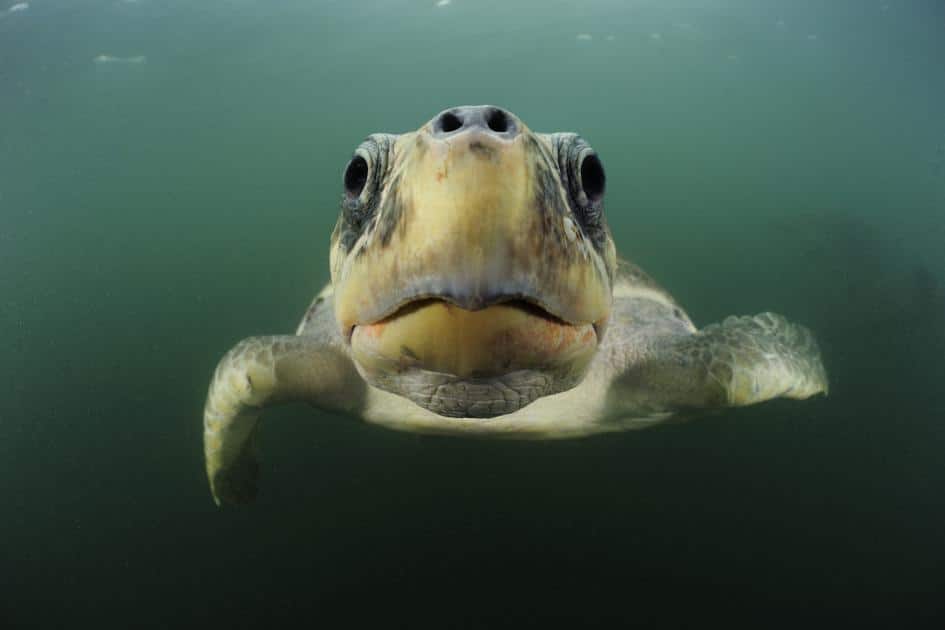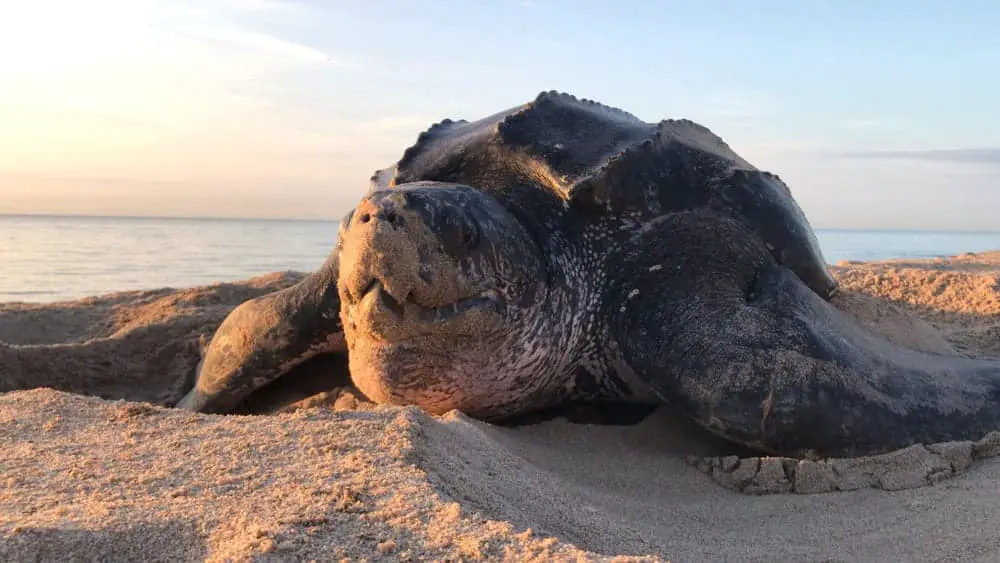Do Sea Turtles Have Teeth

Introduction
Do Sea Turtles Have Teeth: Sea turtles, the ancient mariners of the ocean, have captured the imagination of people worldwide with their graceful movements and remarkable adaptations to life in the sea. These creatures, which have been navigating the world’s oceans for millions of years, exhibit a wide array of intriguing features and behaviors. One of the questions that often arises when studying these charismatic reptiles is whether or not sea turtles have teeth.
Unlike many animals, sea turtles do not have the typical teeth that we commonly associate with chewing and tearing food. Instead, their mouths are equipped with a fascinating array of structures that serve specific functions in their diet and survival. Understanding the nature of these structures and how sea turtles use them to interact with their environment and obtain nourishment is essential for appreciating the complexity of their marine biology.
We will delve into the world of sea turtles to uncover the truth about their dental adaptations. We will discuss the various types of structures within their mouths, how they vary between different species of sea turtles, and how these adaptations relate to their dietary preferences. By the end of this journey, you will gain a deeper appreciation for these magnificent creatures and their remarkable adaptations for life in the ocean.

Are sea turtles teeth sharp?
Sea turtles do not have teeth to grasp their prey with, but instead, have very sharp beaks and strong jaws they use to crush their food. Every sea turtle also has stiff downward projections in their throats called papillae that prevent their meals from slipping back out of their mouth.
Sea turtles do not have traditional sharp teeth like those found in many predators. Instead, they possess specialized adaptations in their mouths that suit their dietary needs. Some species of sea turtles have powerful beak-like jaws with pointed, sharp edges. These jaws are designed for crushing and tearing into hard-shelled prey like crabs, lobsters, and mollusks. Loggerhead turtles, for instance, are known for their strong jaws, which enable them to crush the exoskeletons of their crustacean prey.
However, it’s important to note that not all sea turtles have sharp-edged jaws. Green turtles, which are primarily herbivores, have serrated jaws that are more adept at slicing through seagrasses and algae. These serrations help them tear vegetation as they graze on underwater plants.
The leatherback sea turtle, the largest of all sea turtle species, has a unique adaptation that sets it apart from the others. Instead of sharp teeth or serrated jaws, it possesses a specialized esophagus lined with backward-pointing spines. These spines help retain slippery prey like jellyfish, preventing them from escaping as the leatherback swallows its prey whole.
How many teeth does a sea turtle have?
Turtles don’t have teeth. Instead, their upper and lower jaws have sheaths made of keratin (the same stuff your fingernails are made of) that fit onto the skull like a pair of false teeth. Turtle shells are made of over 50 bones fused together – so they’re literally wearing their bones on the outside.
Sea turtles are unique among reptiles in that they don’t possess traditional teeth sets like mammals or some other reptilian species. Instead, their oral structures are adapted to their specific feeding habits.
Most sea turtles have beak-like jaws with sharp edges that resemble a bird’s beak more than conventional teeth. Loggerhead turtles, for instance, typically have around 48 to 68 of these pointed, shearing structures, which they use to crush and tear their prey, primarily consisting of hard-shelled animals like crabs and mollusks.
Green turtles, which have a more herbivorous diet, have beak-like jaws with serrated edges. These serrations help them slice through seagrasses and algae efficiently. They don’t have a specific number of teeth in the way we think of human or mammalian dentition.
Leatherback sea turtles, on the other hand, possess a unique adaptation. Instead of teeth or serrated jaws, they have specialized structures in their esophagus lined with backward-pointing spines that help retain their slippery prey, such as jellyfish.
In essence, the number of “teeth” in sea turtles can’t be quantified as a fixed dental count, as it varies among species and depends on the specific adaptations they’ve developed for their respective diets and feeding behaviors.
Do turtle bites hurt?
Do their bites hurt? Yes, however, the severity of the bite depends a lot on the size and species of the tortoise or turtle. Do they only bite when they are hungry/curious? No, they can bite if they feel threatened.
The pain caused by a turtle bite largely depends on the species of turtle and its size, as well as the individual circumstances of the encounter. Generally, most turtle species have relatively weak jaws and are not designed to inflict severe harm on larger animals, including humans. Their bites are often more of a defensive or exploratory nature.
Common pet turtles like red-eared sliders and painted turtles have relatively small jaws and weak bites. Getting bitten by these turtles may not be particularly painful, akin to a pinch or a nip. However, their bites can still break the skin and potentially introduce bacteria, which can lead to infections if not properly cleaned and treated.
On the other hand, snapping turtles, especially the alligator snapping turtle, have much more powerful jaws and can deliver a painful bite. These turtles have a strong beak-like jaw with sharp edges and can exert considerable force. A bite from a snapping turtle can cause serious injury and should be treated promptly.
In any case, it’s essential to exercise caution and avoid provoking or handling wild turtles, as they may bite out of fear or self-defense. When handling pet turtles, gentle and respectful interaction is key to preventing bites and ensuring the well-being of both the turtle and the handler. If bitten, it’s advisable to seek medical attention to prevent infection and assess any potential damage.
How painful is a sea turtle bite?
Answer: Although these aquatic reptiles are not aggressive, they can bite you if they feel danger. Moreover, sea turtles have quite sharp beaks and powerful jaws, so their bites are usually very painful. The sea turtle’s bite often creates severe skin bruises and sometimes can break human bones.
A sea turtle bite is not typically known for causing significant pain to humans. These gentle marine creatures are primarily herbivorous or, in the case of some species like loggerheads, feed on crustaceans and mollusks with their specialized jaws. Their bites are not designed to inflict harm on larger animals, and sea turtles generally do not view humans as prey.
Sea turtles are not aggressive towards humans and usually only bite in self-defense if they feel threatened or cornered. In such cases, their bites are more like nips or pinches rather than causing severe pain. The strength of their jaws varies between species, with loggerhead turtles having stronger bites due to their diet of hard-shelled prey, while green turtles have serrated jaws for slicing through vegetation.
Nonetheless, any bite can potentially break the skin, and there’s always a risk of infection from bacteria in the turtle’s mouth. Therefore, it’s essential to exercise caution and respect when encountering sea turtles in the wild. Avoid handling or disturbing them, and keep a safe distance to ensure their well-being and minimize any chance of a bite, even if it is unlikely to be highly painful. If bitten by a sea turtle, it is advisable to seek medical attention to clean and treat the wound properly.
Why do sea turtles do not have teeth?
Turtles feed on various food without teeth. To survive, turtles have beaks or jaws like birds instead that helps them with the chewing, biting and tearing of their meals before swallowing. These beaks are sharp and continue to grow throughout the turtle’s life.
One of the main reasons sea turtles lack teeth is their preferred diet. Many sea turtle species are herbivorous, consuming seagrasses and algae, which do not require teeth for chewing. Instead, they have developed serrated jaws that help them grasp and slice through vegetation efficiently.
For those sea turtle species that are carnivorous or omnivorous, such as loggerheads, their diet primarily consists of hard-shelled prey like crabs and mollusks. In these cases, the turtles have evolved strong, beak-like jaws with sharp edges to crush and tear their prey. These specialized jaws eliminate the need for conventional teeth designed for grinding or tearing.
Maintaining teeth in a saltwater environment can be challenging. Sea turtles have evolved other means to cope with their underwater surroundings, such as specialized glands to excrete excess salt, rather than developing complex dental structures.
In essence, sea turtles’ lack of teeth is a testament to their incredible adaptability and the efficiency of their specialized feeding adaptations, tailored to their specific diets and the challenges of life in the ocean.
How do sea turtles avoid ingesting plastic, which can resemble their natural prey?
Sea turtles face a significant challenge when it comes to ingesting plastic debris, as plastic often resembles their natural prey items like jellyfish or floating algae. This misidentification can lead to ingestion, causing severe health issues or even death for these marine reptiles.
One way sea turtles avoid ingesting plastic is through their keen sense of smell. They can detect chemical cues in the water to distinguish between their natural prey and plastic items. However, this method isn’t foolproof, as plastic can absorb odors from the ocean, making it smell similar to real food.
Another strategy is their ability to filter out larger particles using special structures in their mouths called papillae. When they encounter something that doesn’t feel like food or is too large, they often spit it out. However, smaller plastic particles or pieces that resemble bite-sized prey can still be mistakenly ingested.
Educational efforts, conservation initiatives, and legislation to reduce plastic pollution in oceans are essential components of protecting sea turtles. Additionally, responsible waste disposal practices on land, particularly near coastlines, can help reduce the amount of plastic that ends up in the ocean.
Ultimately, while sea turtles have evolved some mechanisms to avoid ingesting plastic, the scale of plastic pollution in the oceans remains a pressing issue that requires global cooperation and a commitment to reducing our plastic footprint to safeguard these magnificent creatures and their marine habitats.
How do sea turtles eat without teeth?
Sea turtles have evolved fascinating adaptations that allow them to feed effectively without traditional teeth. Their unique feeding strategies are well-suited to their oceanic lifestyle and dietary preferences.
- Beak-like Jaws: Many sea turtle species, such as loggerheads, have strong, beak-like jaws with sharp edges. These jaws are designed for crushing and tearing, enabling them to consume hard-shelled prey like crabs and mollusks. They use their powerful jaws to break through the shells of their prey items.
- Serrated Jaws: Green turtles, which are primarily herbivores, have serrated jaws that resemble the edge of a serrated knife. These serrations help them slice through seagrasses and algae efficiently.
- Swallowing Prey Whole: Some sea turtles, like the leatherback, have esophagi lined with backward-pointing spines. This unique adaptation allows them to swallow slippery prey like jellyfish whole, preventing their prey from escaping.
- Filter-Feeding: Certain sea turtle species, like the ridley turtles, are filter-feeders. They primarily consume small, planktonic organisms. Instead of teeth, they have specialized structures in their mouths that allow them to filter tiny prey from the water as they swim.
These adaptations showcase the incredible diversity of sea turtle species and their ability to exploit various ecological niches within the ocean. While they may not have traditional teeth for grinding or chewing, sea turtles have evolved a range of tools and techniques that enable them to thrive in their underwater environments.
Do sea turtles have teeth like land turtles or other reptiles?
Sea turtles, fascinating marine reptiles that have graced our oceans for millions of years, possess some intriguing differences from their terrestrial counterparts when it comes to teeth. Unlike land turtles or other reptiles, sea turtles do not have the traditional teeth we might envision. Instead, they have evolved specialized adaptations suited to their underwater lifestyle.
Sea turtles have sharp, beak-like jaws, which serve as their primary tool for grasping and tearing their prey, such as jellyfish, seaweed, and crustaceans. These beaks lack the true teeth found in land turtles or other reptiles, which are typically used for chewing or grinding. The structure of a sea turtle’s jaw allows them to catch and consume their prey whole or in large chunks, facilitating efficient feeding in the aquatic environment.
This adaptation highlights the remarkable ways in which nature tailors the anatomical features of animals to suit their specific habitats and dietary needs. Sea turtles, with their unique beak-like jaws, are a prime example of the diverse and fascinating adaptations that have enabled different species to thrive in their respective environments beneath the waves.

Conclusion
In the world of sea turtles, the question of whether they have teeth might seem straightforward, but the truth is far more fascinating. These ancient marine creatures have evolved an array of adaptations to suit their oceanic lifestyle, and their dental structures are no exception.
While sea turtles lack the conventional teeth we envision, their mouths are far from toothless. Instead, they possess specialized structures that serve specific purposes. The sharp, beak-like jaws of some species, like the loggerhead, help them crush and consume hard-shelled prey such as crustaceans and mollusks. In contrast, the leatherback, the largest of all sea turtles, boasts a unique esophagus lined with backward-pointing spines to trap slippery jellyfish.
These adaptations highlight the remarkable diversity of sea turtle species and their capacity to exploit various ecological niches within the ocean. While some turtles are carnivorous and rely on sharp jaws, others, like the herbivorous green turtle, have serrated jaws suited for munching on seagrasses and algae.
These adaptations are essential for their survival in the ever-changing marine environment, and they underscore the importance of conserving these ancient creatures for generations to come. Sea turtles may not have the teeth we’re accustomed to, but they possess a dental toolkit perfectly tailored to their underwater world.



